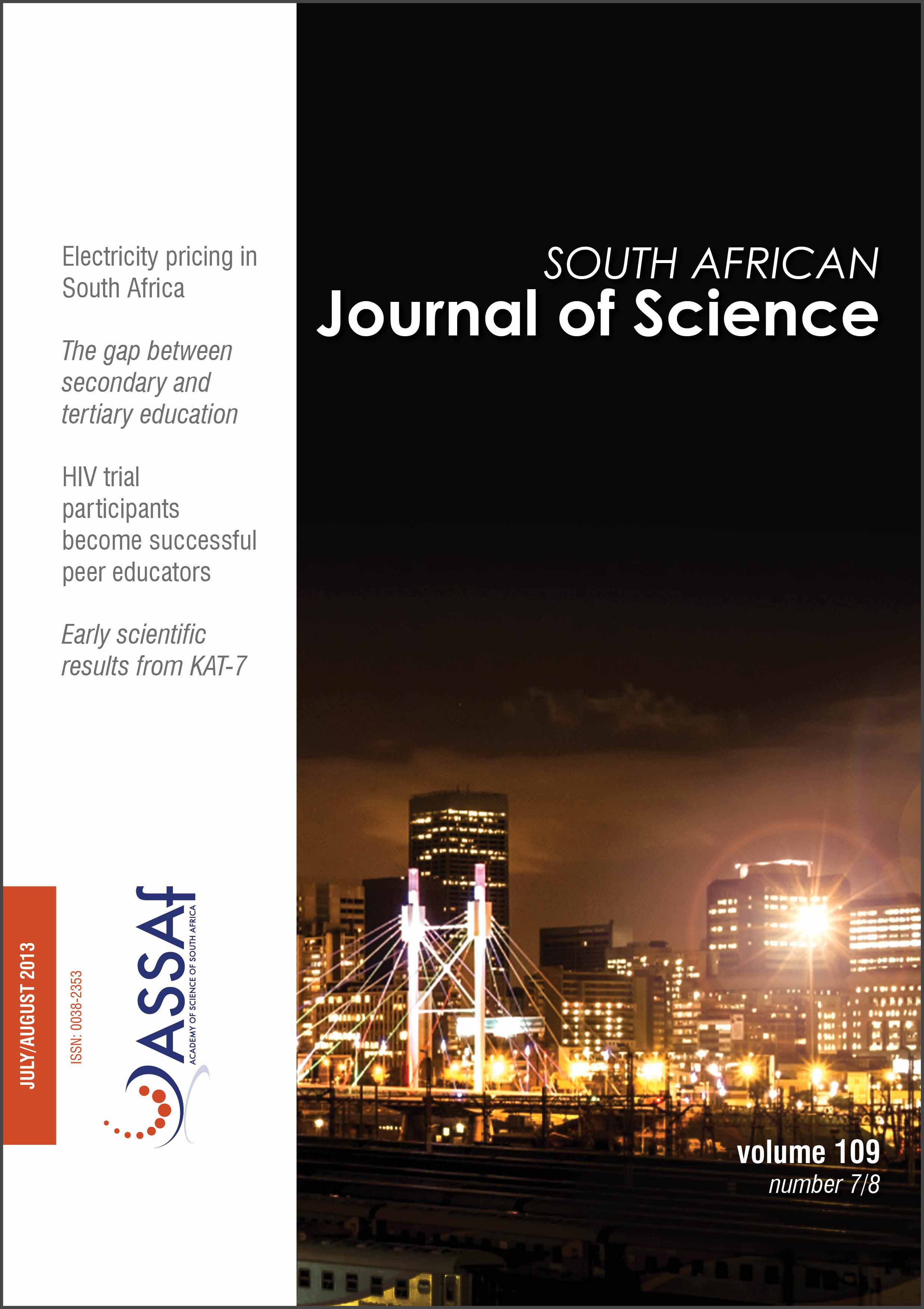A cell viability assay to determine the cytotoxic effects of water contaminated by microbes
DOI:
https://doi.org/10.1590/sajs.2013/20120069Keywords:
MTT assay, viability assay, mammalian tissue culture, duodenum cell line, drinking water qualityAbstract
Many South Africans do not have access to safe drinking water, so they have no alternative but to use water from contaminated sources that poses a health hazard. This poor state of affairs appears to be deteriorating. In order to distinguish safe from unsafe sources, the aim of this study was to adapt the well-known MTT (3-[4,5-dimethylthiazol-2-yl]-2,5-diphenyltetrazolium bromide) assay into a simple and efficient method to screen the suitability of drinking water without needing to know the nature of any possible contamination. This modified assay presents an immediate and reliable answer to whether water is potable without recourse to standard chemical and microbiological water-quality tests. The MTT assay was used here for the first time to test the effects of microbes, and not chemical contaminants as is traditionally the case, on the viability of human duodenum cells exposed to water samples of interest. Filtered tap water and water from a borehole, for example, had limited adverse effects on cell viability. Cell viability decreased greatly after exposure to dam, treated sewage and river water which confirmed the value of the assay as a screening tool.
Published
Issue
Section
License

All articles are published under a Creative Commons Attribution 4.0 International Licence
Copyright is retained by the authors. Readers are welcome to reproduce, share and adapt the content without permission provided the source is attributed.
Disclaimer: The publisher and editors accept no responsibility for statements made by the authors
How to Cite
- Abstract 494
- PDF 447
- EPUB 186
- XML 200













.png)